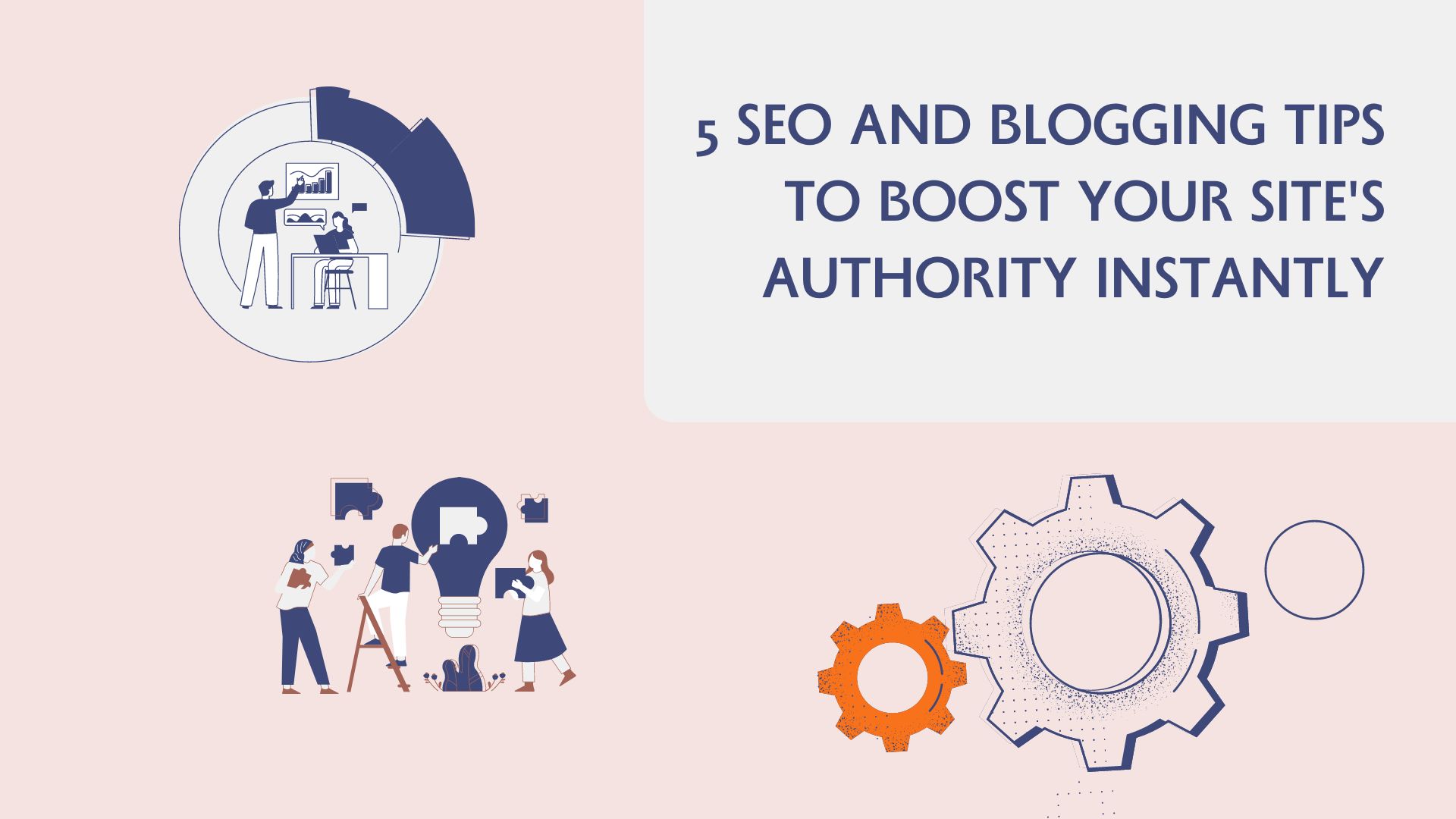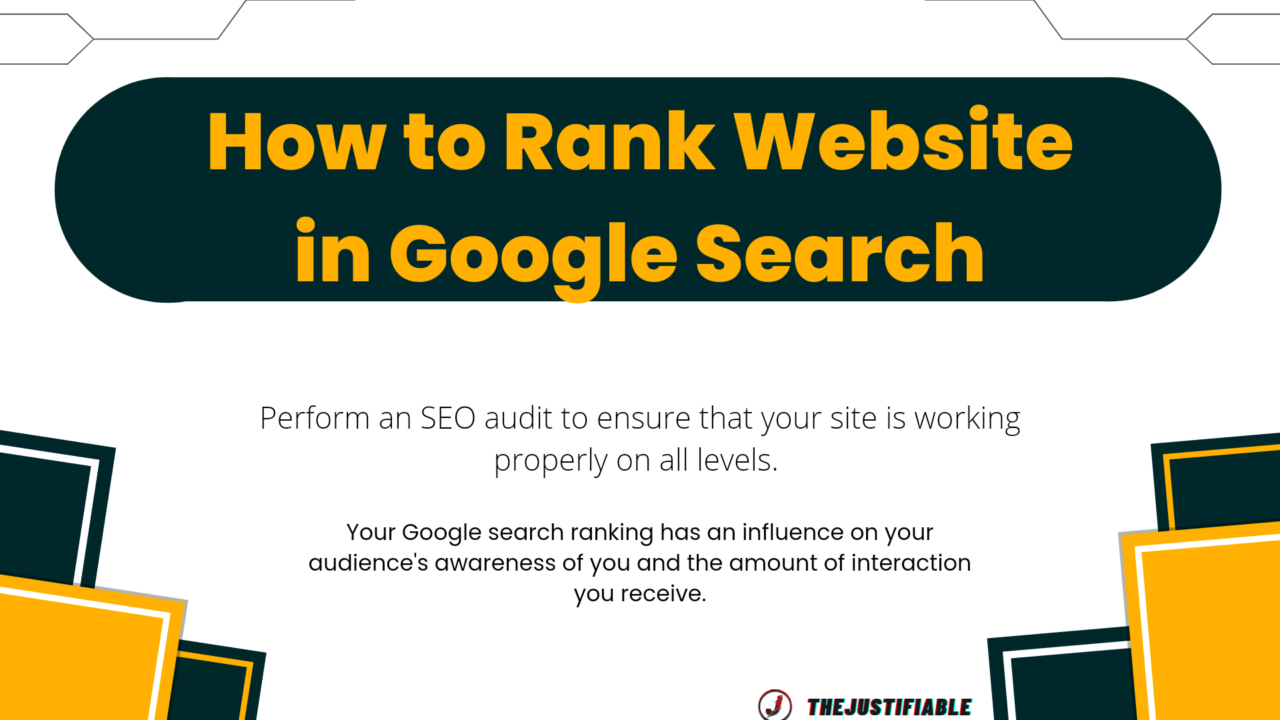Table of Contents
SEO and blogging tips are essential for anyone looking to boost their site’s authority and visibility. In today’s competitive digital landscape, it is crucial to employ strategies that not only attract visitors but also engage and retain them.
By focusing on proven SEO techniques and effective blogging practices, you can significantly enhance your website’s performance.
This article will guide you through five actionable tips designed to improve your search engine rankings, increase your audience engagement, and establish your site as a trusted authority in your niche.
Whether you’re a seasoned blogger or just starting out, these insights will provide the genuine value needed to elevate your online presence.
Mastering the Basics of SEO and Blogging
How can you lay the groundwork for a successful online presence? According to my experience, it begins with getting the basics right. My suggestion for anyone starting out is to focus on understanding the core principles of SEO and blogging.
From my point of view, this knowledge is crucial for creating a strategy that not only attracts visitors but also retains them.
In my estimation, mastering these basics is akin to learning the rules of a game before trying to win it. It’s about knowing what works best for your particular niche and audience.
I strongly believe that a well-rounded approach, incorporating both SEO techniques and engaging blogging practices, is key to enhancing your site’s authority and visibility.
SEO Services Recommendations
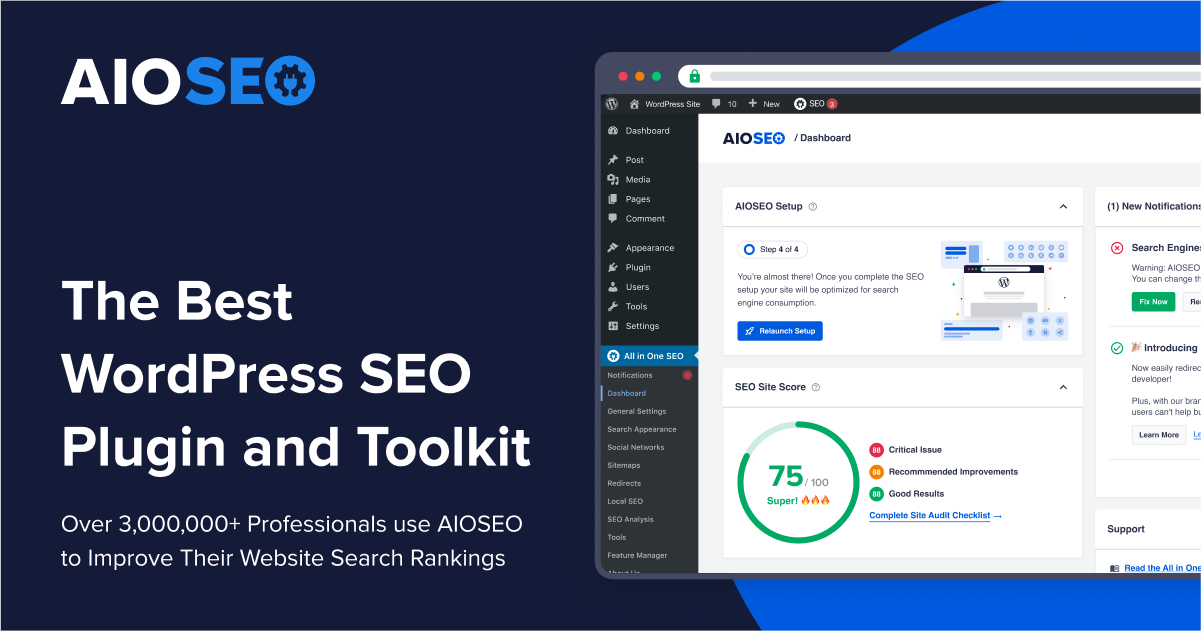 AIOSEO
| 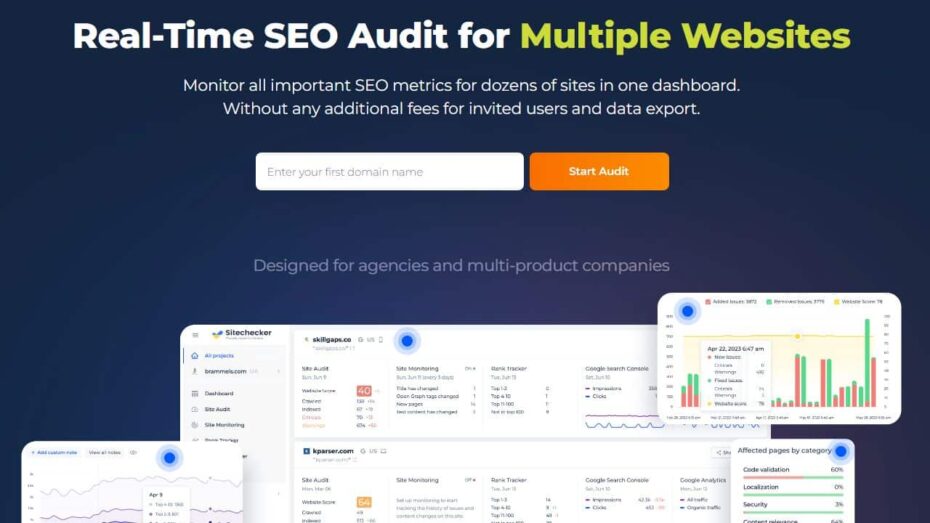 Sitechecker
| 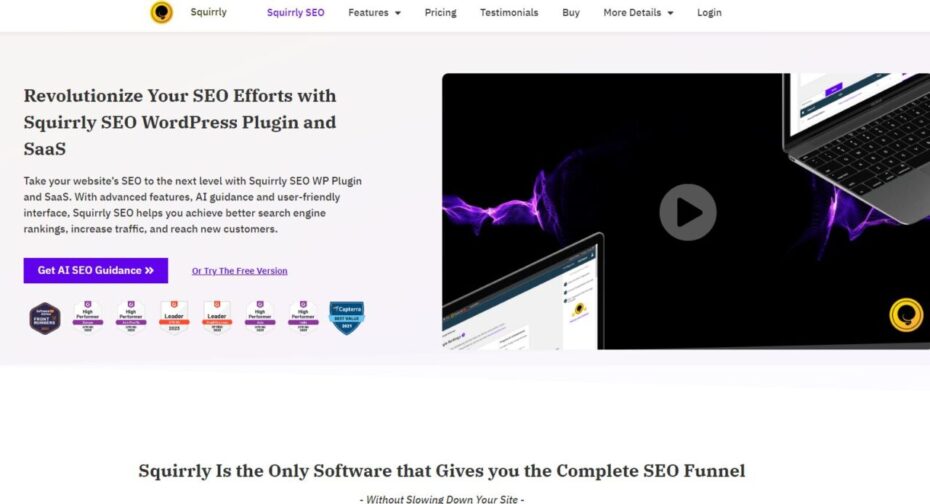 Squirrly
|
Forge a Solid Foundation: Essential SEO Principles
Why are SEO principles crucial for your site’s success? From my perspective, mastering SEO is like building a strong foundation for your house—it’s essential for everything that comes next.
In my opinion, a deep understanding of SEO principles is not just beneficial, but necessary for the health and visibility of your website.
Firstly, consider the importance of keyword research. It seems to me that finding the right keywords can make or break your SEO strategy. I recommend using various tools to uncover the terms your audience is searching for, and then integrating those terms into your content in a natural, helpful way.
Avoid keyword stuffing, as it can harm your rankings and user experience.
Secondly, optimizing your site’s structure and navigation is crucial. A well-organized website helps search engines understand and index your content efficiently.
From my view, a clear hierarchy and simple navigation not only improve your site’s SEO but also enhance the user experience, encouraging visitors to stay longer and explore more.
In my estimation, technical SEO also plays a significant role. Ensuring your site is mobile-friendly, loads quickly, and is secure (HTTPS) are key factors search engines consider.
I would say that regularly auditing your site for technical issues and fixing them promptly is a best practice every site owner should adopt.
Crafting Compelling Content: Blogging Mastery
How does blogging contribute to your site’s SEO and authority? In my experience, compelling content is the cornerstone of any successful blog.
It’s not just about informing your audience but also engaging and inspiring them. Crafting content that resonates with readers can significantly boost your site’s visibility and authority.
The first step, in my opinion, is to understand your audience deeply. This involves knowing their needs, questions, and pain points. I recommend creating content that not only addresses these aspects but also provides unique insights and solutions.
It’s about adding real value to their lives, which, in turn, can foster loyalty and encourage social sharing.
Next, consistency is key. I believe that a regular publishing schedule keeps your audience engaged and helps with SEO, as search engines favor websites with fresh content.
My suggestion is to plan your content calendar in advance, allowing for flexibility to cover trending topics or timely issues as they arise.
Furthermore, optimizing your blog posts for SEO should be a priority. This includes using keywords naturally, optimizing meta tags, and creating engaging, click-worthy headlines.
From my point of view, these elements are crucial for improving your visibility in search engine results pages (SERPs) and attracting organic traffic.
Unleashing the Power of Keywords

Did you know that 50% of search queries are four words or longer? This statistic highlights the importance of long-tail keywords in SEO and blogging tips, emphasizing the need to understand and harness the power of keywords to boost your site’s authority.
When you grasp the significance of this, you start to see keywords not just as a part of your content but as a crucial element that bridges what your audience is searching for and the solutions you provide.
Keywords are the compass that guides your content strategy, leading to a treasure trove of increased visibility and engagement. From my perspective, the art of selecting the right keywords involves a deep understanding of your target audience and their search intent.
I recommend using keyword research tools to uncover terms your audience uses in their search queries. This initial step is fundamental in crafting content that resonates with your readers and ranks well in search engine results pages (SERPs).
Keyword Wizardry: Finding Your Magic Words
The journey to finding your magic words begins with curiosity and the right tools. Did you know that the right keyword can increase your search traffic by over 200%? From my experience, the best place to start is with comprehensive keyword research tools such as Google Keyword Planner or SEMrush.
These platforms offer insights into search volume, competition, and even related keywords that you might not have considered.
Once you have a list of potential keywords, it’s important to analyze their relevance to your content and audience. I strongly believe that relevance is key to selecting keywords that not only drive traffic but convert visitors into loyal readers or customers.
My suggestion is to look for keywords that closely match the user’s intent. Are they looking for information, or are they ready to make a purchase? Understanding this can significantly impact your content’s effectiveness.
Additionally, don’t overlook the power of long-tail keywords. These are longer, more specific keyword phrases that visitors are likely to use when they’re closer to a point-of-purchase or when they’re using voice search.
From my perspective, long-tail keywords are a goldmine for attracting highly targeted traffic that is more likely to convert because they align closely with user intent.
Lastly, consider the competitiveness of your chosen keywords. It might be tempting to target high-volume keywords, but the competition may be too stiff, especially for newer or smaller sites.
I recommend starting with less competitive keywords where you have a better chance of ranking higher. This doesn’t mean settling for less but rather strategically positioning your content where it has the best chance to shine.
Strategic Placement: Elevate Your SEO Game
Once you have your keywords, knowing where to place them is crucial for maximizing their impact. The title of your content is the first place search engines and readers look, so including your primary keyword here is non-negotiable.
From my point of view, a well-crafted title can make a significant difference in your content’s visibility and click-through rate.
The introduction is another critical area for keyword placement. I suggest incorporating your primary keyword naturally within the first 100 words of your content. This not only helps search engines understand the focus of your article but also reassures readers that they’ve found what they’re looking for.
Don’t forget about headings and subheadings. These elements help break up your content, making it more digestible for readers, and provide additional opportunities to include your keywords.
In my experience, well-placed keywords in headings can greatly enhance your content’s SEO while maintaining a natural and engaging flow.
Lastly, consider the metadata—your content’s title tags and meta descriptions. Although they might not directly impact rankings, they influence whether users decide to click on your content.
I am of the mind that compelling, keyword-rich meta descriptions can significantly improve your click-through rates from search engine results pages, driving more traffic to your site.
Link Building Strategies to Amplify Your Reach
“Link building is both the art and science of giving your website the credibility it needs to thrive.” This statement encapsulates the essence of link building in the realm of SEO and blogging tips.
Link building is not just about acquiring any links; it’s about creating connections that enhance your site’s authority and visibility. By strategically building links, you can amplify your site’s reach, driving more organic traffic and boosting your rankings in search engine results pages (SERPs).
The key to successful link building lies in understanding its dual role as both a science and an art. From a scientific standpoint, it involves analytical processes like evaluating the quality and relevance of potential link partners.
From an artistic perspective, it’s about crafting relationships and creating content that naturally attracts links. My recommendation for anyone looking to enhance their site’s authority is to approach link building with both precision and creativity.
By doing so, you can develop a link profile that supports your SEO goals and fosters genuine connections within your industry.
Building Bridges: Crafting Valuable Connections
“Alone we can do so little; together we can do so much.” – Helen Keller. This quote beautifully illustrates the importance of crafting valuable connections in the digital landscape.
Building bridges in SEO isn’t just about the technical aspect of acquiring backlinks; it’s about establishing relationships with other websites, bloggers, and influencers in your niche.
One effective strategy is to engage with your community through comments, social media, and forums. This engagement not only puts your name out there but also helps you understand what content is valued by your community.
In my opinion, genuine engagement leads to natural link-building opportunities as you become a recognized and respected member of your community.
Another approach is to create shareable content. From my perspective, content that provides unique insights, data, or resources naturally attracts links. I suggest focusing on quality over quantity.
A well-researched and comprehensive guide, for example, is more likely to be linked to than a superficial article. My recommendation is to identify gaps in your niche and create content that fills those gaps, making your site a go-to resource.
Lastly, don’t underestimate the power of reaching out directly. Whether it’s to propose a collaboration, share your content that complements theirs, or simply to introduce yourself, personalized outreach can open doors to valuable connections.
From my experience, a respectful and well-crafted outreach email can be the beginning of a fruitful relationship. It’s important, in my view, to approach outreach with a mindset of offering value rather than just seeking links.
Guest Blogging: Unlocking New Audiences
“Guest blogging is not dead; it has merely evolved.” This statement highlights the enduring relevance of guest blogging as a link-building and audience-expansion strategy.
Despite changing SEO landscapes, guest blogging remains a powerful tool for reaching new audiences and securing high-quality backlinks, provided it’s done with integrity and focus on quality.
The first step in successful guest blogging is finding the right platforms. I recommend looking for blogs that not only have a significant audience but also share your niche and values. This alignment ensures that the traffic and links you gain are relevant and beneficial.
According to my estimation, contributing to well-respected platforms within your industry can significantly boost your credibility and authority.
When crafting your guest post, it’s essential to provide genuine value to the host site’s audience. My suggestion is to treat your guest post as if it were being published on your own site.
This means investing effort into creating high-quality, informative, and engaging content that addresses the needs and interests of the audience. In my view, the more value you provide, the more likely the readers are to follow the links back to your site.
Networking with other bloggers and site owners can also enhance your guest blogging efforts. I am of the mind that building relationships with peers in your industry can lead to more guest blogging opportunities and collaborations.
In my opinion, networking is a crucial component of a successful guest blogging strategy, as it opens doors to new platforms and audiences that might otherwise remain locked.
Enhancing User Experience for SEO Success
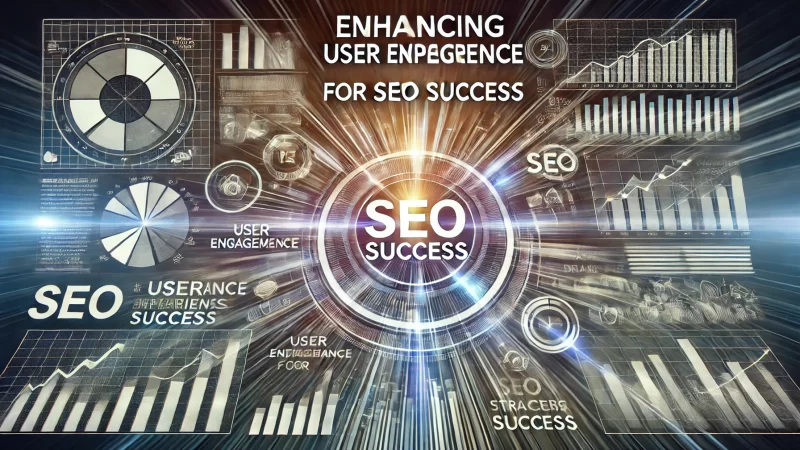
Much like a well-oiled machine ensures a smooth and efficient operation, optimizing the user experience (UX) on your website ensures visitors not only find what they’re looking for but enjoy the journey. This comparison highlights the crucial role UX plays in SEO success.
An optimal user experience reduces bounce rates and increases the time spent on your site, signaling to search engines that your site is valuable and deserves a higher ranking.
Focusing on enhancing UX is essential because it directly impacts how visitors interact with your site. From the moment they land on your page, every element should work towards providing them with ease of navigation, fast loading times, and relevant, engaging content.
I would say, prioritizing UX in your SEO strategy is not just about appeasing search engines; it’s about genuinely catering to the needs and preferences of your audience.
According to my view, this approach not only boosts your rankings but also builds trust and loyalty among your visitors, which are invaluable to your site’s long-term success.
Speed Optimization: Making Seconds Count
In the digital realm, speed is not just a luxury; it’s a necessity. A delay of a few seconds in page loading can lead to a significant drop in engagement, with visitors choosing to go elsewhere for information or services.
This reality underscores the importance of speed optimization as a cornerstone of enhancing user experience and, by extension, SEO success.
The first step in speed optimization is to assess your current site speed using tools like Google’s PageSpeed Insights. These tools not only provide you with your site’s loading times but also offer suggestions for improvement.
From my perspective, tackling these recommendations can dramatically improve user satisfaction. I strongly believe that optimizing images, minimizing code, and leveraging browser caching are among the most effective strategies to enhance your site’s speed.
Additionally, consider the impact of your web hosting service on your site’s speed. A reliable and high-performing hosting service can make a significant difference in loading times. I recommend choosing a host that understands the importance of speed to SEO and offers technologies specifically geared towards enhancing site performance.
Moreover, the use of Content Delivery Networks (CDNs) can also boost your site’s speed by storing cached versions of your site on servers around the world. This means that no matter where your visitors are accessing your site from, they can enjoy faster loading times.
From my view, CDNs are an essential tool in the speed optimization arsenal, especially for sites with a global audience.
Mobile-Friendly Design: Capturing the Mobile Audience
In today’s world, where the majority of internet traffic comes from mobile devices, having a mobile-friendly design is not optional; it’s imperative. This necessity is akin to a business having an open sign on their door. Without a mobile-friendly design, you’re essentially telling a huge portion of your potential audience that they’re not welcome.
The first step to capturing the mobile audience is to ensure your website design is responsive. This means your site automatically adjusts to fit the screen size and resolution of any device, from desktops to smartphones.
I believe a responsive design not only improves usability but also contributes significantly to your SEO efforts, as search engines favor mobile-friendly websites.
Moreover, consider the navigation and interface of your mobile site. It should be easy for users to find what they’re looking for with minimal taps or swipes. My suggestion is to streamline your content and menu options for the mobile experience, focusing on simplicity and speed.
Furthermore, mobile optimization also includes ensuring your site’s speed is up to par on mobile devices. This involves compressing images and utilizing mobile-specific speed optimization strategies. In my view, a fast, responsive mobile site significantly enhances user experience, encouraging longer visits and higher engagement rates.
Lastly, don’t forget to regularly test your mobile site’s performance across different devices and browsers. Tools like Google’s Mobile-Friendly Test can provide insights into how well your site performs on mobile and offer suggestions for improvement.
Leveraging Analytics to Refine Your Strategy
It’s true that intuition and experience play significant roles in shaping digital strategies. However, in the rapidly changing world of online marketing, leveraging analytics to refine your strategy is not just beneficial; it’s essential.
Analytics provide the hard data and insights needed to make informed decisions, allowing you to optimize your SEO and blogging efforts effectively.
The integration of analytics into your digital strategy empowers you to understand your audience better, track the performance of your content, and identify areas for improvement. I would say that analytics act as a compass, guiding your efforts in the right direction.
By analyzing data on user behavior, traffic sources, and engagement metrics, you can tailor your content and SEO strategies to better meet the needs of your audience.
Most importantly, this data-driven approach enables you to allocate your resources more efficiently, focusing on tactics that deliver the best ROI.
Data-Driven Decisions: Analytics at Work
The power of analytics lies in its ability to transform raw data into actionable insights. For instance, by monitoring which blog posts attract the most traffic and engagement, you can identify topics that resonate with your audience.
From my perspective, this knowledge is invaluable. It allows you to produce more of the content your audience loves, increasing engagement and loyalty.
Additionally, analytics can shed light on the effectiveness of your SEO strategies. By tracking keyword rankings, organic traffic, and conversion rates, you can gauge the impact of your SEO efforts.
According to my experience, understanding these metrics is crucial for fine-tuning your approach to SEO, ensuring that you’re not just attracting visitors but driving meaningful actions on your site.
Conversion rate optimization (CRO) is another area where analytics can be incredibly useful. By analyzing how users interact with your site, you can identify barriers to conversion and make necessary adjustments.
In my estimation, even small changes, informed by data, can lead to significant improvements in conversion rates. This could involve modifying your call-to-action placement, streamlining your navigation, or simplifying your checkout process.
Furthermore, analytics allow you to monitor the user journey across your site. This includes which pages they visit, how long they stay, and what actions they take.
From my point of view, understanding this journey is essential for creating a seamless user experience that guides visitors towards your desired outcomes. It’s about making data-driven decisions that not only enhance the user experience but also contribute to your overall business goals.
Adapting and Evolving: Staying Ahead of the Curve
In the fast-paced world of digital marketing, staying ahead of the curve requires constant adaptation and evolution. Analytics play a crucial role in this process, offering insights that help you anticipate market trends and adjust your strategies accordingly.
One way to stay competitive is by continuously monitoring industry benchmarks and comparing your performance. I recommend using analytics to understand where you stand in relation to your competitors and identifying areas where you can improve.
This competitive analysis can inspire new ideas and strategies that propel your business forward.
Moreover, analytics can help you spot emerging trends in your data, such as changes in user behavior or shifts in traffic sources. By staying alert to these trends, you can adapt your content and SEO strategies to meet the evolving needs of your audience.
In my opinion, this proactive approach is key to maintaining relevance and authority in your niche.
It’s also important to experiment and test new strategies based on the insights gained from analytics. Whether it’s trying out different content formats, exploring new SEO tactics, or testing different user experience designs, analytics provide the framework for informed experimentation.
I’m of the mind that ongoing testing and optimization are the cornerstones of a successful digital strategy.
Lastly, analytics not only help you adapt to the present but also plan for the future. By analyzing data trends over time, you can make predictive analyses that inform your long-term strategy.
From my perspective, this ability to anticipate future challenges and opportunities is what ultimately keeps you ahead of the curve.
Ignite Your Site’s Potential with Proven SEO and Blogging Tips
In the vast ocean of digital content, standing out requires more than just a presence; it necessitates a strategy that intertwines SEO and blogging with the core identity of your site.
From my experience, harnessing the power of proven SEO and blogging tips is akin to lighting a beacon that guides your audience through the clutter directly to your shores. It’s about establishing a connection that’s not only visible but valuable.
Most importantly, I would say that consistency and quality are the keystones in this endeavor. Regularly updating your site with engaging, informative content that’s optimized for search engines can significantly boost your visibility and authority.
My recommendation? Don’t chase after the latest trends blindly. Instead, focus on creating content that resonates with your audience and stands the test of time. From my perspective, this approach not only enhances your SEO but also builds a loyal readership.
Moreover, it seems to me that the technical aspects of SEO should not be overlooked. Ensuring your site is fast, mobile-friendly, and secure lays a solid foundation for both user experience and search engine rankings.
According to my estimation, attending to these technical elements can dramatically improve your site’s performance and user satisfaction.
Lastly, I strongly believe in the power of analytics to refine and guide your strategy. Regularly monitoring your site’s performance and adapting based on data-driven insights can propel your site to new heights.
From my point of view, analytics offer a clear path through the maze of digital marketing, allowing you to optimize your efforts for maximum impact.
Take the Leap: Elevate Your Site’s Authority Today
If you’ve ever felt overwhelmed by the challenge of enhancing your site’s authority and reach, I’m here to say, you’re not alone. But now is the time to take the leap. With the proven SEO and blogging tips we’ve discussed, you have a roadmap to elevate your site’s presence and influence.
My suggestion? Start small, focusing on one area of improvement at a time, and gradually build your way up.
I recommend beginning with a content audit to identify opportunities for optimization or new topics that align with your audience’s interests. From there, prioritize mobile optimization and site speed enhancements to ensure your site provides a seamless user experience.
It seems to me that these foundational steps are crucial for any site looking to improve its SEO and user engagement.
Furthermore, I encourage you to embrace the power of link-building and guest blogging as strategies for expanding your reach and authority. By crafting valuable connections and exposing your content to new audiences, you can significantly amplify your site’s impact.
In my view, these efforts are well worth the investment, offering long-term benefits for your online presence.
Lastly, never underestimate the value of continuous learning and adaptation. The digital landscape is always evolving, and so should your strategies. I’m of the mind that staying informed and flexible is key to staying ahead in the game.
So, if you ask me, there’s no better time than now to ignite your site’s potential and watch it soar to new heights of success. Take the leap, and let’s elevate your site’s authority together.
Frequently Asked Questions (FAQ)
What is the importance of SEO for a blog?
SEO (Search Engine Optimization) is crucial for a blog as it improves its visibility on search engines. Enhanced visibility leads to increased organic traffic, higher engagement, and better chances of converting visitors into loyal readers or customers. A well-optimized blog ranks higher on search results, attracting more targeted traffic.
How can I find the right keywords for my blog posts?
To find the right keywords, use tools like Google Keyword Planner, SEMrush, or SEOPowersuite. Start with broad topics related to your niche and narrow down to long-tail keywords. Analyze the search volume and competition to choose the most effective keywords that match your audience’s search intent.
What are long-tail keywords and why are they important?
Long-tail keywords are specific, longer phrases that visitors use when they are closer to a point of purchase or when using voice search. They are important because they attract highly targeted traffic, have lower competition, and often lead to higher conversion rates compared to short, broad keywords.
How often should I update my blog content?
Updating your blog content regularly is essential. Aim for at least one new post per week. Fresh content keeps your audience engaged and signals search engines that your site is active, which can improve your SEO rankings.
What is link building and how does it help SEO?
Link building involves acquiring hyperlinks from other websites to your own. It helps SEO by increasing your site’s authority and credibility. High-quality backlinks from reputable sites can significantly boost your search engine rankings and drive more organic traffic.
How can I make my blog mobile-friendly?
To make your blog mobile-friendly, use a responsive design that adjusts to different screen sizes. Optimize images, use legible fonts, and ensure buttons are easily clickable on mobile devices. Test your site’s mobile compatibility with tools like Google’s Mobile-Friendly Test.
What role does page speed play in SEO?
Page speed is a critical factor in SEO. Faster loading times improve user experience, reduce bounce rates, and are favored by search engines. Optimize your page speed by compressing images, minifying code, and using a reliable hosting service.
How can I measure the effectiveness of my SEO strategy?
Measure the effectiveness of your SEO strategy using tools like Kissmetrics and Sitechecker. Track metrics such as organic traffic, bounce rate, keyword rankings, and conversion rates. Regularly analyze this data to refine and improve your SEO efforts.
What is the best way to optimize blog titles for SEO?
Optimize blog titles by including primary keywords, making them clear and engaging, and keeping them within 50-60 characters. A compelling title can improve click-through rates and help search engines understand the content of your post.
How does social media impact SEO and blogging?
Social media can indirectly impact SEO by driving traffic to your blog, increasing brand awareness, and encouraging backlinks. Sharing your blog content on social media platforms can boost engagement, leading to more shares and higher visibility in search engine results.


